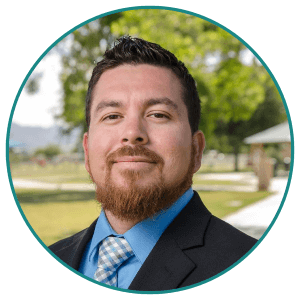As the last decade of the twentieth century began, the Reagan legacy seemed destined to continue under the presidency of George Bush. Though the president's popularity soared as Operation Desert Shield liberated Kuwait and defeated Iraq in 1991, a year later Bill Clinton turned Bush into a one-term wonder. The public wasn't repudiating Republican philosophy. In 1994 that party gained control of congress, then declared a "Contract with America." In spite of the investigations of an independent counsel, President Clinton was re- elected to a second term. Just over a year later the Lewinsky affair broke. In 1998 the House approved articles of impeachment. In 1999, the Senate acquitted the President.
The Soviet Empire crumbled during the 1990s, breaking into fifteen independent states. Yugoslavia also came apart and tumbled into anarchy. The slaughter ended only after a NATO assault on Serbia and an indefinite deployment of peacekeeping forces. Germany reunited, China reclaimed Hong Kong, and South Africa made the difficult transition from apartheid to democracy.
The state of race relations in America was revealed by two California legal cases. Los Angeles erupted in riots after police, videotaped beating Rodney King, were acquitted. Divergent views of the American Justice System were again demonstrated during the OJ Simpson trials and contradictory verdicts.
Terrorist bombers struck the New York World Trade Center, Oklahoma City, US Military installations in Saudi Arabia, the Atlanta Olympics, and the US Embassies in Kenya and Tanzania. The Branch Davidian siege resulted in more than 70 deaths. TWA Flight 800 plummeted into the Atlantic. Members of Heaven's Gate religious cult committed mass suicide. In 1998, the murder rate in the US dropped to the lowest level in more than twenty years, though school shootings became more common. Thirteen students and teachers were murdered in the tragedy at Columbine High in 1999.
America's game struck out in 1994. Major league baseball went on strike in August and didn't return until April. Four years later, Mark McGuire broke Roger Maris' single season home run record, a year after Tiger Woods won the Masters Golf Tournament at the age of 21.
Some of our icons died - the heroic Joe DiMaggio, the saintly Mother Teresa, the beautiful Princess Diana, and handsome young JFK Jr.
The economy, and the stock market, continued to soar. The DOW passed 5,000 in 1995, then 11,000 in 1999 before slumping a little. By the end of the decade US inflation was at a twelve-year low. The first federal budget surpluses since 1969 occurred in 1998 and 1999.
Arizona's Charles Keating and the Lincoln Savings failure had an impact of national proportions. Arizona voters approved a Martin Luther King Holiday. Governor Fife Symington resigned following a fraud conviction that was later overturned. In 1999, Jane Dee Hull became the first woman to be elected governor of Arizona. Our state earned a 6th Congressional District, with more expected, as population continued to sky-rocket to an estimated 5 million, more than a 30% increase during the 1990's.
In the midst of America's most prosperous years, APRA suffered a devastating financial blow. The NRPA congress came to Phoenix in 1990. APRA, as host institution, was unable to hold its usual state conference (a primary source of income). Plans to raise money at the national event failed to meet expectations. The organization had to use all its reserves and cut some member services. Part of 1990's financial impact is shown by membership figures. APRA increased to 1,000 by 1999, but gained only about 100 members over the decade. On the positive side, District V and the Ethnic Minority Section came into being during this decade. The profession went from being driven by tourism to youth at risk. APRA played a role in the ASU West program starting and was involved in accreditation of Arizona State University (ASU) West, ASU main and Northern Arizona University park and recreation programs.
In spite of financial hardships, APRA collected 30,000 signatures to put the Heritage Fund on the ballot in 1990, then raised $5,000 to support the bill. The fund, providing $20 million a year for park and recreation projects, passed with 63% of the vote. APRA has remained actively engaged on the legislative front ever since, for example, as a member of the Heritage Fund Alliance, a group formed to protect the fund against raids for other projects.
Arizona lost two important professionals during this decade. Emerson Hall and Edith Ball contributed much to our profession and have been missed.
Roger Hacker, APRA's first Executive Director, retired in 1997. On his recommendation, the organization sought a replacement with a background in association management. Ira Rubins, the successful candidate, has proved to be a master fundraiser, and just the person APRA needed to continue recovering from financial problems.
APRA moved to new offices and reorganized in 1997, mimicking NRPA's format. Members are now divided into professional branches instead of geographically. The objectives remain the same with an added emphasis on education and legislation. An example is that APRA now offers a National Playground Safety School with NRPA. The national organization supplies the speakers and gets a percentage of the registration, but APRA raises funds and offers educational opportunities to members. APRA also redesigned its annual awards program to follow NRPA guidelines and improve the chances of state candidates for national recognition.
The decade's economic growth was matched by its technological innovations. Alternative means of communication flourished and APRA took advantage of them. APRA got an 800 number, opened an impressive web site, acquired e-mail access, and began hosting an interactive discussion group online.
The magazine strove to be self-supporting by using several different publishing formats. The membership valued the magazine highly and voted to keep it even if it had to be subsidized.
The annual conference was reorganized early in the decade. The 1993 event netted a record $60,000, an amount equaled or bettered every year since. Evening sessions have been offered for the first time, attracting those who would not other-wise attend.
Senator John McCain, a past APRA Conference speaker, launched a dramatic presidential campaign at the end of the decade, once again propelling an Arizona Favorite Son to national prominence. In spite of rattled nuclear sabers by India and Pakistan, the cloning of a sheep named Dolly, and predictions of millennial catastrophe, Y2K arrived with no more problems than any other year. APRA greeted 2000 with renewed vigor and financial stability. To paraphrase the Executive Director "APRA's future is not what it used to be, but it can be what the association's members decide to make it."
The Presidents who served APRA during the 1990's were:
- 1990 Vern Biaett, Phoenix
- 1991 Bob White, Mesa
- 1992 Bob Martin, Tucson
- 1993 Dale Larsen, Phoenix
- 1994 Peg Weber, Tucson
- 1995 Maury Ahlman, Gilbert
- 1996 Jan Zale, Leisure World, Mesa
- 1997 Vera Perkins, Phoenix
- 1998 Pam Foti, Northern Arizona University
- 1999 Judy Weiss, Scottsdale


















